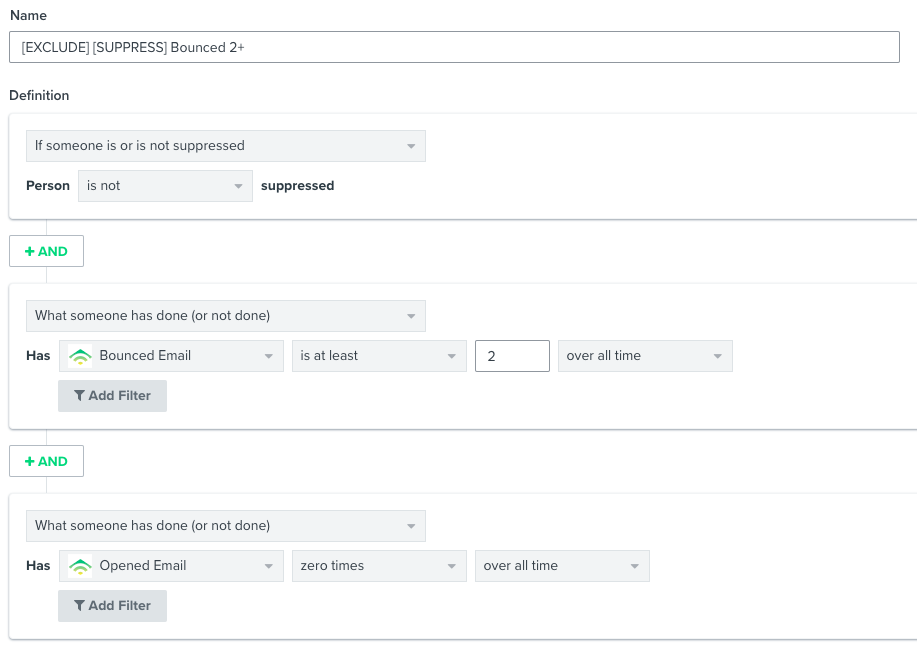One of the most common questions exchanged between online entrepreneurs is “How big is your list?” or “How many subscribers do you have?”
The bigger the number, the “cooler” you sound because the more subscribers the better. Is this true? No, it is not.
This is like if business owners were bragging about their revenue. Revenue is a gross number before expenses. If you make $1M in revenue and your expenses are $1M, you’re breaking even with your business, which is not a good sign.
The same thing is true for the average email list size. Your list is not as important as the number of engaged subscribers on your list.
What is the Average Email List Size in eCommerce
As previously said, increasing your list size does not imply that you will earn more money as a result of increased clientele.
Generally smaller eCommerce businesses will have a smaller list size as they may not be able to invest a lot in email marketing services. But larger organizations have the money to invest in email marketing.
Depending on the nature of your business, you may need a small or a large list size. It also depends on open and conversion rates.
For example, the apparel and accessories industry has an open rate of around 18% and a conversion rate of 0.11%, whereas, for the food and beverage industry, the open rate is over 20%, whereas the conversion rate is 0.28%.
Therefore, your list size should depend on your industry. However, for some companies, even a small list size, may be ideal for a large organization.
According to research, on average, just 50% of your subscribers will be interested in purchasing your product or service, while the other 50% will not really be interested.
Your objective is to develop relationships with as many subscribers as possible and turn them into brand loyalists.
What is a Good Size for an Email List
Now, you may be wondering what is the optimum size for an email list.
Considering how large your email list should be, you can use a formula to calculate it.
This formula is:
Subscribers x Click through rate x Website conversion rate= Conversion from your emails
Subscribers x Click through rate x Website conversion rate= Conversion from your emails
To determine how many subscribers you need for your business first you need to take a look at your website conversion rate and compare it to your email click-through rate.
The industry average conversion rate for websites is 3%.
The click-to-open rate is an excellent indicator for measuring engagement levels since it indicates how many subscribers on your list are acting on your emails.
A low open and click-to-open rate indicates that many subscribers are not opening your emails because they are banned or sent to their spam folder.
An excellent technique to achieve this regardless of the size of your email list is to:
- Separate it into segments and deliver only relevant material.
- Monitor your subscribers’ engagement levels and delete those who do not participate after a specified time period.
- Purge your email list frequently, depending on what type of material you are sending.
The size of your email list is critical, and regardless of the size of your e-commerce firm, you should strive for at least 1000 subscribers.
If there are fewer than 1000 subscribers, conversions will be challenging.
Does the Email List Size Even Matter?
Yes, list size is critical, and the industry to which you belong also matters.
Research shows that on average if your list size is less than 2000, you should send no fewer than four emails, but not more than eight emails per month.
If you receive around 100 subscribers each week but lose approximately 20 subscribers with each email sent, you should not send more than five emails every week.
Let’s take a look at the average number of emails that you should be sending.
- If you have fewer than 100 subscribers, send only one or two emails per month
- If you have between 100 and 1000 subscribers, send one email per week
- If you have between 1,000 and 5000 subscribers, send two emails per week
- And if you have between 5000 and 10,000 subscribers, send two emails per week.
- If your list exceeds 10,000 subscribers, you should send daily emails.
However, the content you send is critical and may help you determine how many emails you should send each month.
For instance, you may send blog entries once or twice a month, whereas discounts and special deals, as well as news and product highlights or events, on a daily basis.
Multiple emails promoting the same piece of information or blog post will be perceived as spam, and you will lose followers.
Read on to find out more about whether subscriber engagement or email list size is more important.
Subscriber Engagement vs. Email List Size: Which One is More Important?
Your subscriber engagement is very important since it impacts your sender’s reputation and deliverability.
If you want to have a high engagement rate (high open rate and click-through rate), you need to stay on top of list hygiene. This means suppressing inactive subscribers.
In general, the perception is that the bigger your list, the more money you can make. However, this statement isn’t entirely true either. Your subscribers need to open the email to see what you offer and consider buying.
I’ve had some clients who had only 20,000 subscribers and generated $1M revenue in one month, vs clients who had 100,000 subscribers and generated around $250K in monthly revenue.
The engagement rate in the first case was around 30% and in the other case, it was closer to 5% –– a big difference.
Our first step when we start working with a new client is to create a new segment to see the subscribers’ engagement level. Those segments are:
1. [EXCLUDE] [SUPPRESS] Received 10+ emails and opened zero
This is the group of subscribers who received at least 10 emails overall but engaged zero times.
For engagement in this segment, we say opened email zero times overall and clicked zero times as well.
Here is the snapshot of the setup in Klaviyo:

The idea of this segment is to dynamically capture all inactive subscribers and suppress/delete them on a regular basis.
Typically, we do it on a monthly basis but during the holiday season (such as Black Friday, Cyber Monday), we do it more often, closer to every other week.
Also, we always exclude this segment from all campaigns. This way, we make sure that we do not send emails to inactive subscribers.
As I said before, sending emails to inactive subscribers can impact your sender’s reputation negatively.
2. [EXCLUDE] [SUPPRESS] Bounce 2+
This segment is made of the group of people who received your email and soft bounced at least two times.
A soft bounce is when something happens: like their inbox is full or they have an autoresponder on to express being out of the office.
Klaviyo recommends suppressing subscribers if the email bounced 4+ times, but since the sender’s reputation is so crucial in this business, I would rather suppress a few extra subscribers than risk a negative impact on the sender’s reputation.
So, we are creating a segment with the following criteria:

You Should Prioritize List Cleaning
There’s no way to overstate the value of keeping a list engaged. You need to keep an eye out for dormant accounts and remove them as soon as possible.
You may have a hard time deleting or suppressing subscribers from your account, however, this step is necessary.
We always want to see enormous numbers climb and increase our email list, but in this scenario, it’s ideal to focus on increasing the open and click-through rates.
Once you figure out the optimum number of emails to send per week, have an increasing number of new subscribers, with lower unsubscribe rates, you will have figured out the perfect email list size for your brand!








